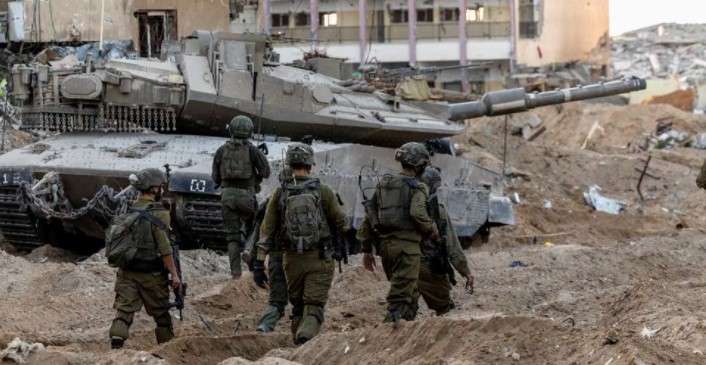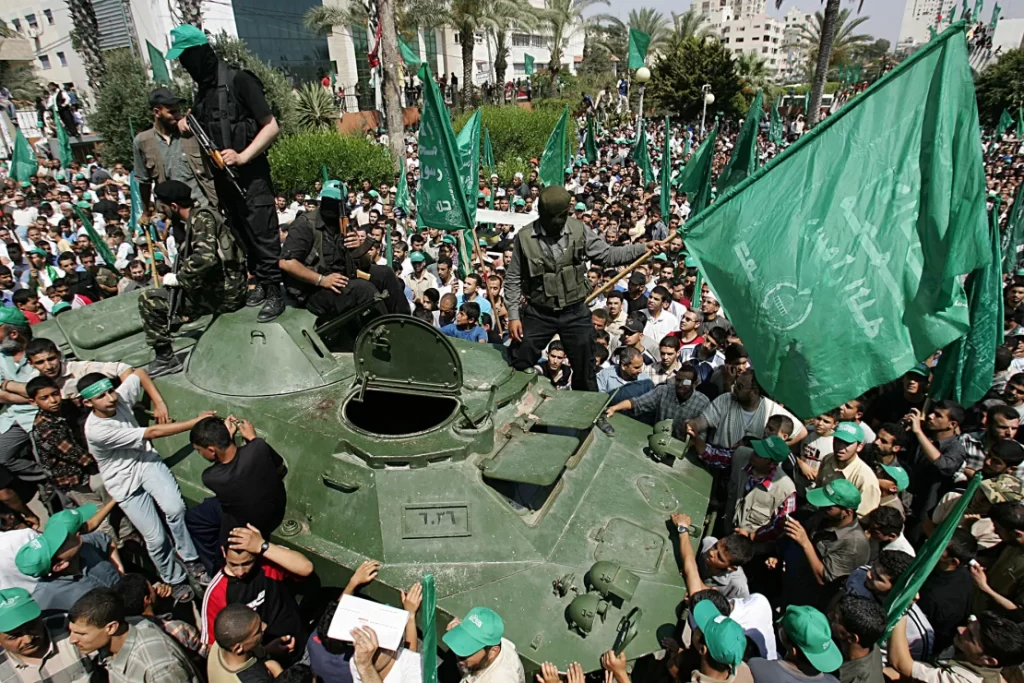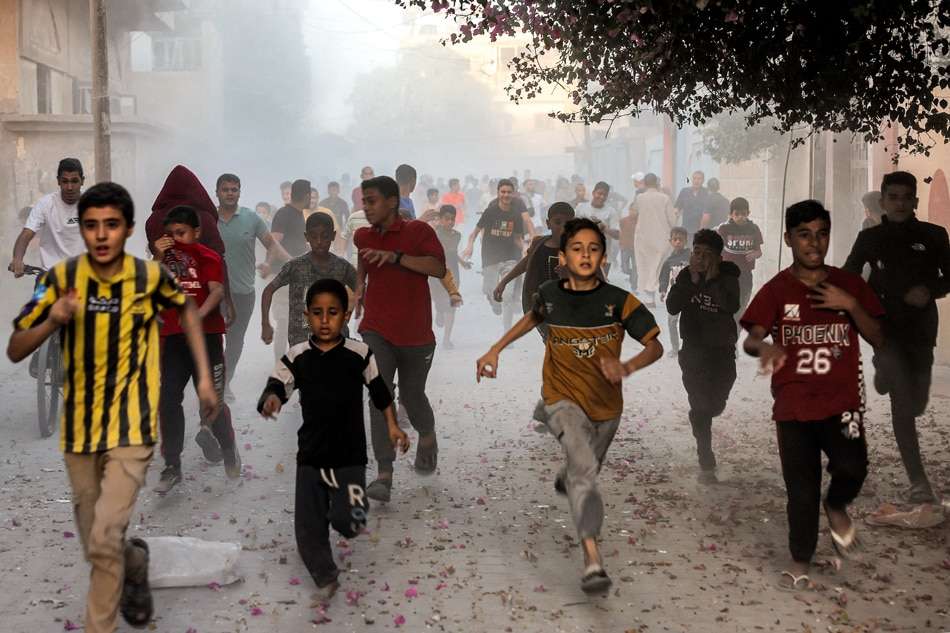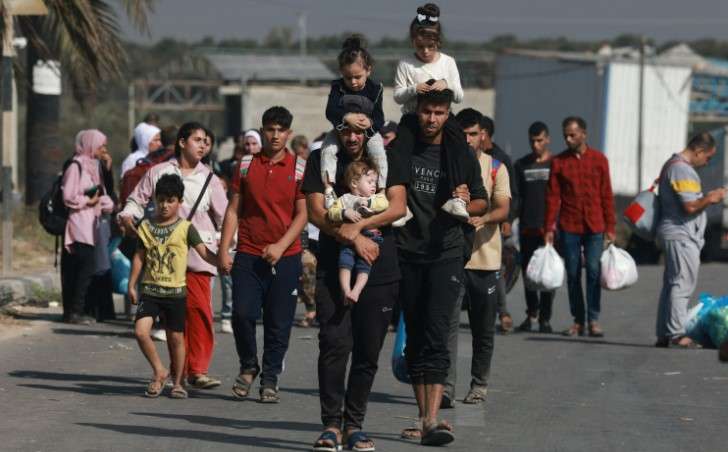Israel-Hamas War: November 8, 2018 (a Reuters report) – In a televised briefing on Wednesday, Israel’s military spokesperson, Rear Admiral Daniel Hagari, stated that Hamas had lost control of the northern part of Gaza as thousands of inhabitants have moved south.
“50,000 Gazans moved from the northern to the southern parts of the Gaza Strip. Rear Admiral Daniel Hagari stated, “They are moving because they recognize that Hamas has lost power in the north.” “Hamas has lost control and is continuing to lose control in the north.”

What is the Hamas organization?
Formerly the Muslim Brotherhood, a nonviolent Sunni Islamist organization established in Egypt in the late 1920s, Hamas is an Islamist organization with a military branch that was formed in 1987.
Hamas claims to be an occupying power that is attempting to free the Palestinian territory, much like the majority of Palestinian organizations and political parties. The United States, the European Union, and Israel have all recognized it as a terrorist group because it has repeatedly claimed to have carried out attacks on Israel.
Hamas rejects Israel’s legitimacy and refuses to cooperate with it, in contrast to several other Palestinian factions. It was against the 1993 Oslo Accords, a peace agreement between Israel and the Palestine Liberation Organization (PLO) that promised Israel an independent Palestinian state in exchange for the PLO giving up violent resistance. In the Israeli-occupied West Bank, the Accords also formed the Palestinian Authority (PA).
Since taking control of Gaza in 2007, Hamas has positioned itself as the PA’s rival.
From 1967 until its unilateral withdrawal of troops and settlers in 2005, Israel occupied Gaza and maintained control over the area’s airspace, sea, and land crossings.
The great majority of people living in Gaza are descended from refugees whose forefathers were driven from their homes in modern-day Israel, either by force or by flight. One of the densest populations on the planet is the enclave.

How did the conflict begin?
On October 7, Hamas launched thousands of missiles towards Israeli communities in an operation it dubbed “Al-Aqsa Storm.” Later, militants breached the heavily guarded Israeli border fence and infiltrated deep into Israeli territory.
There, terrorists captured more than 200 hostages, including numerous foreign nationals, and slaughtered both military and civilians. Since the 1948 Arab-Israeli War, Israel has not confronted its enemies on its own territory, so the attacks were unique in both their strategy and scope. It has also never had a terror attack with this intensity that claimed so many civilian lives.
How was Israel’s response?
In response, Israel started “Operation Swords of Iron,” which aimed to destroy Hamas. It established a total blockade of Gaza, preventing the entry of gasoline, food, and water, and it initiated a ground invasion that saw its forces penetrate well into the enclave, essentially dividing it in half.
Israel told Gaza residents to flee their northward-facing homes and head south during the shelling as troops attempted to encircle Gaza City, which they called “the fortress of Hamas’s terrorist activities.”
Human rights organizations have expressed concern that Israel’s evacuation order may violate international law, and CNN has provided evidence of incidents in which Israeli strikes in evacuation zones have killed Palestinian civilians.

How is the situation in Gaza?
Prior to the conflict, Israel and Egypt established a blockade on Gaza that tightly restricted the flow of goods and people into and out of the region.
However, Israel has since tightened the siege even further, prohibiting the entry of fuel, food, and water, which the UN has described as “collective punishment.” As Israel keeps up its bombing, residents are dealing with acute shortages, power is running out, and hospitals are ill-prepared to care for the injured.
Obstetricians frequently perform procedures on patients without using anesthesia, while maternity and postpartum care are essentially nonexistent. Some Gazans have been forced to drink contaminated, salted water due to the collapse of the water infrastructure, raising worries about a health emergency and the possibility that dehydration may cause people to start dying.
According to the UN Office for the Coordination of Humanitarian Affairs (OCHA), there are currently more than 1.4 million internally displaced individuals living in Gaza. The UN Relief and Works Agency for Palestine Refugees (UNRWA) is housing more than half a million people, three times the amount of people it was designed to house.
Health professionals claim that Israel has targeted the hospitals and other civilian buildings where thousands of Palestinians are taking refuge.
Since October 7, the World Health Organization (WHO) claims to have recorded at least 102 strikes against Gaza’s medical institutions. Israel has said that it is going after Hamas agents in the Gaza Strip and charged Hamas with infiltrating residential areas and utilizing people as human shields.
The Gazan Health Ministry reports that almost 4,100 of the people who have died in the enclave are youngsters.
The UN has called the area “a graveyard for children.”
Israel-Hamas War

Palestinians: “Nowhere is Safe”
According to a United Nations organization for refugees, since the Israel Defense Forces established periodic evacuation “corridors” on November 4, tens of thousands of people have walked from the northern to the southern sections of the enclave.
As the humanitarian situation worsens and doctors report running out of medical supplies, more organizations and international politicians are calling for a ceasefire to allow help to enter the country.
US Secretary of State Antony Blinken increased US resistance to a Gaza ceasefire in spite of the pressure.

Hostage Deal Between Israel and Hamas Appears Impossible
Even though the US, Israel, Qatar, and Hamas are actively negotiating, an agreement to guarantee the release of a significant number of hostages that Hamas is holding in Gaza seems elusive for the time being.
One senior US official told CNN that there is no chance Israel will consent to a long-term ceasefire without the return of a significant number of captives. According to diplomatic sources close to the negotiations, the multi-party negotiations, in which Qatar is serving as a major mediator, have been going on for several weeks and have yielded a number of proposals thus far, including the release of ten to fifteen hostages in exchange for a one- or two-day truce.
However, the US official stated that as of Wednesday, such a suggestion was not being considered.
Israel was “ready for a pause,” according to an Israeli official, if there was proof that Hamas was “serious about releasing hostages.” It’s unclear how long Israel would be ready to accept a halt and how many captives would be considered a fair number to release.
Difficult Hospital Evacuation
According to a CNN report, Israel stated Monday that its ground offensive will “intensify” after forces seemed to march more than two kilometers into Gaza. Meanwhile, relief organizations report that civil order is deteriorating in the enclave as airstrikes exacerbate a terrible humanitarian situation caused by Israel’s blockade of basic commodities including as food and gasoline.
Following weeks of aerial assaults on the isolated region, Israel announced over the weekend that it had entered the “second stage” of its war against the Islamist group Hamas, which governs Gaza.
Israel is preparing for a “long and difficult” war as it strives to root out and “destroy” Hamas following its attack on Israel earlier this month, according to Israeli Prime Minister Benjamin Netanyahu.
According to the Palestinian Ministry of Health in Ramallah, Israel’s shelling of Gaza since then has killed at least 7,960 individuals, the vast majority of whom were civilians. According to the ministry, over three-quarters of those deceased (73%), are from vulnerable demographics such as children, women, and the elderly.
According to Amnesty International, it has documented “unlawful Israeli attacks” that “must be investigated as war crimes,” notwithstanding Israel’s claim that it is targeting Hamas.
In the weeks since the Gaza siege began, less than one average day’s worth of relief has been permitted to reach its population.
An Israeli soldier who was among the more than 200 hostages abducted by Hamas in its October 7 onslaught was rescued during Israeli ground operations in Gaza, the Israel Defense Forces (IDF) stated Monday. A 23-year-old German-Israeli woman who was kidnapped from a music event and brought to Gaza has been certified dead, according to Israel’s foreign ministry.
Israel’s expanding operations prompted new warnings from leaders about the potential of wider regional violence, as well as increased requests from the UN for a humanitarian ceasefire to let badly needed aid into Gaza.
You may also like:
